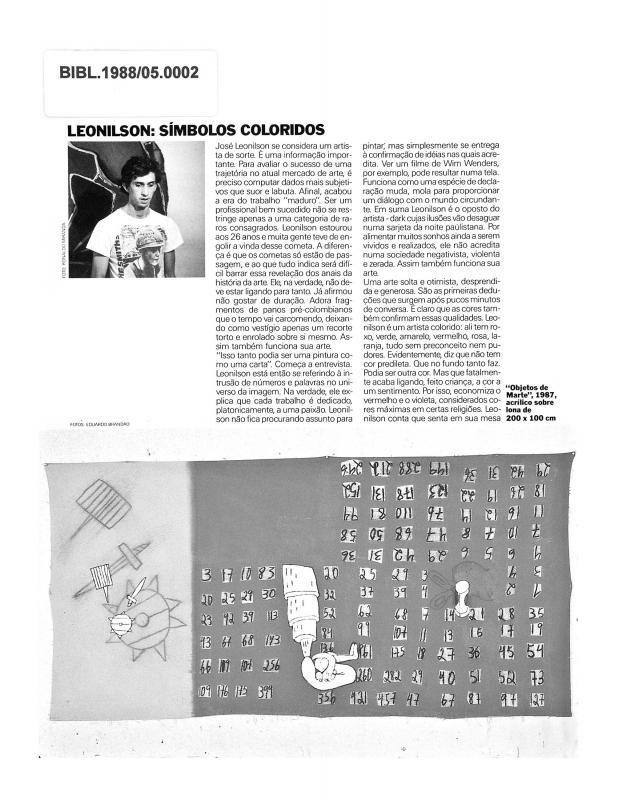This text is an in-depth analysis of the artwork painted by the Brazilian José Leonilson [Bezerra Dias] (1957−93). It situates the artist within the sphere of contemporary art, opening up the possibility of a broader understanding of his techniques with respect to the idea of “working”; the article refers to the artwork and to the art techniques involved. Salzstein makes references to three exhibitions of Leonilson’s work going on at the same time in different Brazilian states: at the Galeria Luisa Strina (in São Paulo), at the Gesto Gráfico (Belo Horizonte, Minas Gerais), and at Espaço Capital (Brasília, Federal District).
From his beginnings in the state of Ceará, in northeastern Brazil, Leonilson migrated internally to live in the city of São Paulo, where he embarked on his training and subsequently began to work as an artist. He is one of the leading representatives of what was known as the “Geração 80” (Generation of the 1980s), which at that time of uncertainty, introduced a trend called the “return to painting.” This was similar to the agitation of the avant-gardes that could only partially be appeased with the “retour à l’ordre” [return to order]. It was indeed a hedonistic practice that ostensibly rejected the rationalism of the Conceptual art, which had predominated in the prior decade. It essentially entails an intimate kind of artwork in which the issue of identity comes up against the imminent presence of death. This was an inescapable image that was unleashed in Leonilson once he found out that he was infected with the AIDS virus.
Writer Sônia Salzstein, who is also an art critic and researcher, is distinguished by her incisive actions on the art and art history circuit. From 1989 to 1992, she was in charge of the visual arts department at the Centro Cultural São Paulo, where she implemented an interesting program oriented toward presenting the work of young artists. She is currently a professor of postgraduate and graduate level art courses in the visual arts department at the Escola de Comunicações e Artes da Universidade de São Paulo (ECA-USP).
Other material about the artist includes the book by Lisette Lagnado, Leonilson: são tantas as verdades (São Paulo Melhoramentos, 1998), second edition; and by the same writer, an interview with Leonilson [doc. no. 1110767], and the essay “Leonilson, símbolos coloridos” [doc. no. 1110768].


